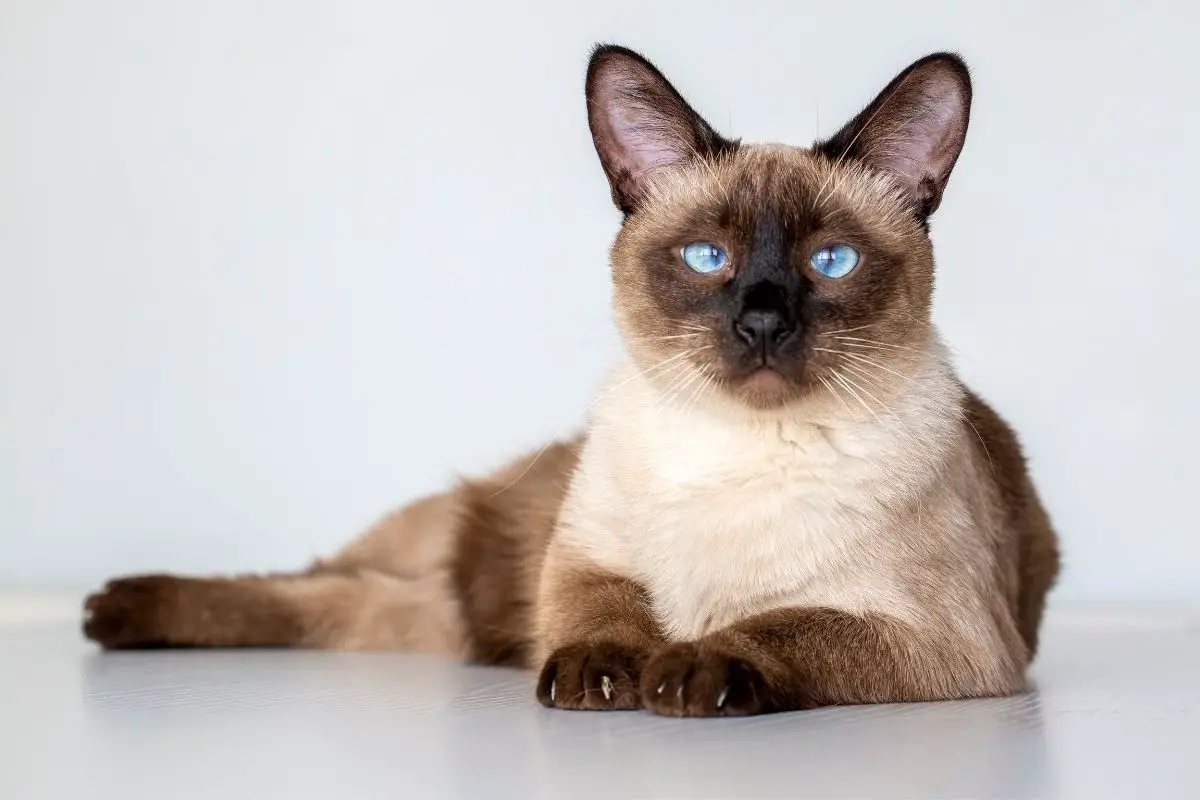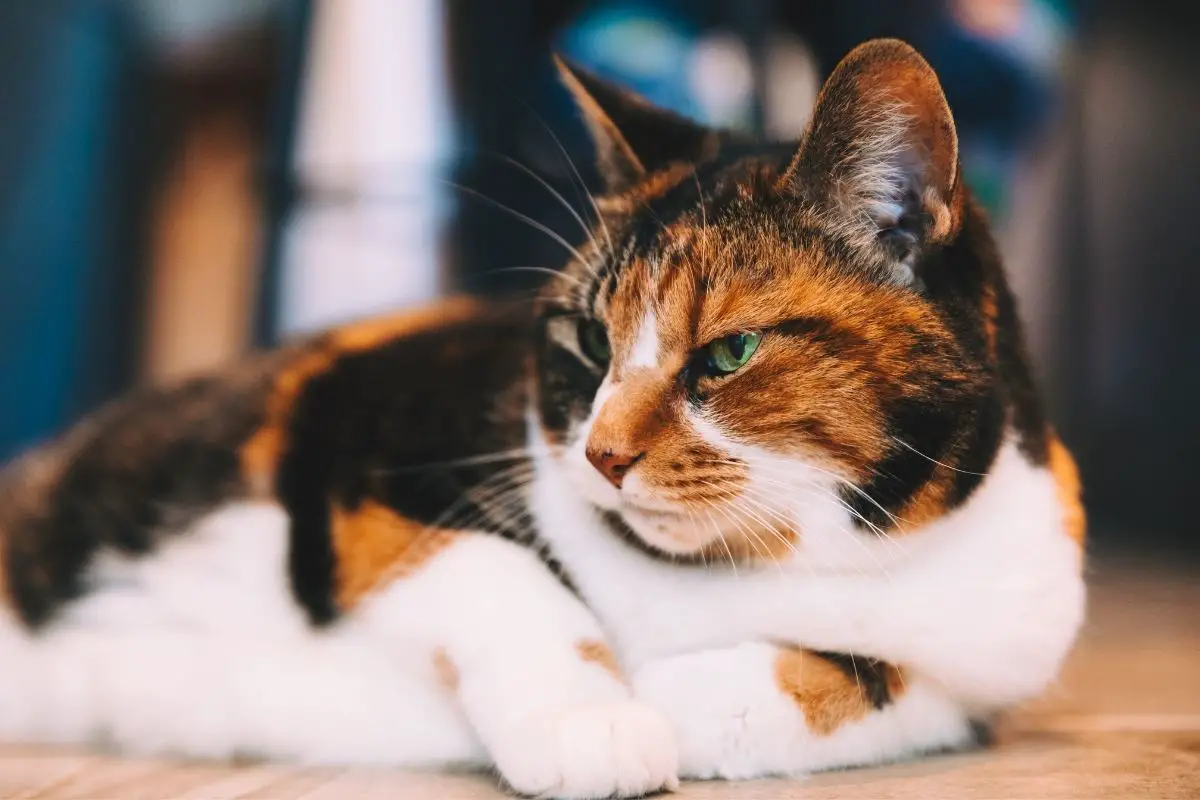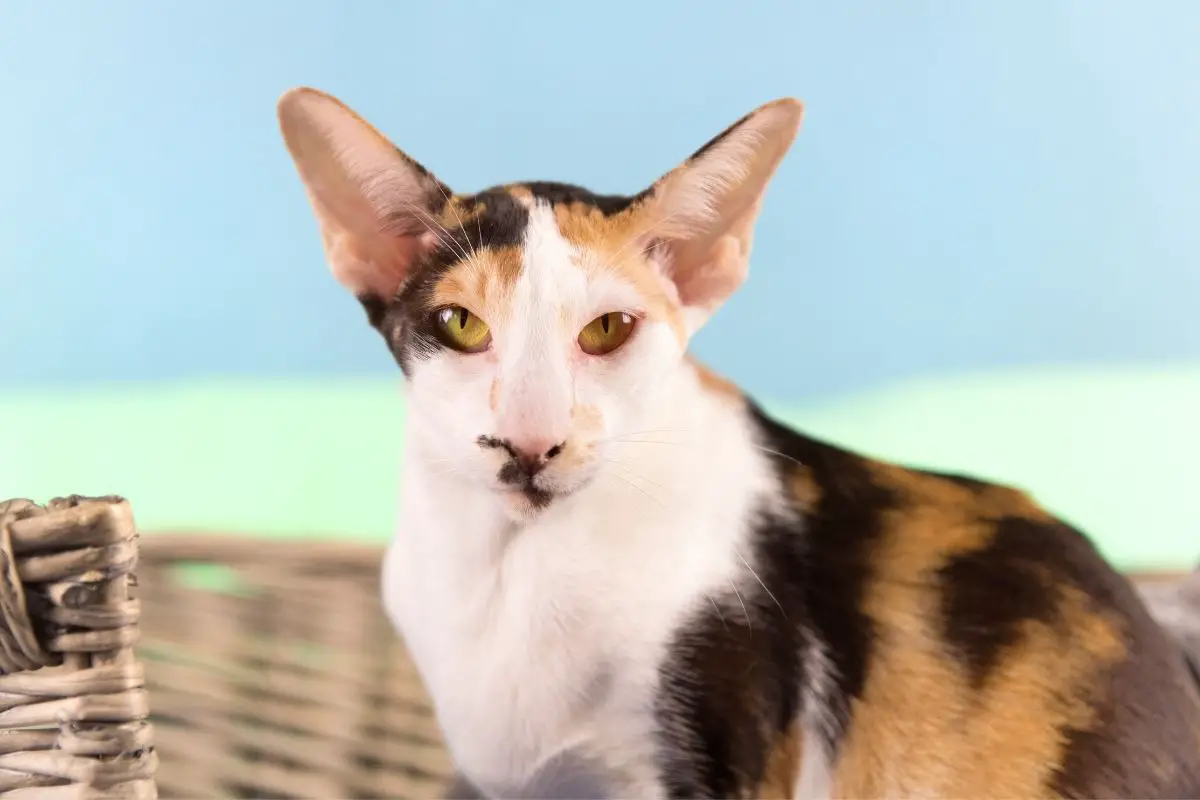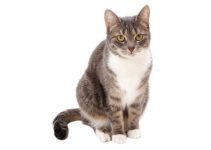It is hardly a huge surprise that Siamese cats are often considered to be amongst the most beautiful breeds, and they remain hugely popular with cat lovers across the world.
Their delicate features, elegant build, and friendly personalities mean that there are plenty of things to love about these stunning felines.
While many Siamese cats come with a distinctive black and tan coat, there are also a range of other shades, patterns, and colors to choose from – all of them distinctive and striking.
Of these, Siamese Calico mixes are often the most misunderstood, with a great deal of confusion surrounding the definition of “Calico”.
To help, we have put together the ultimate guide to ensure that you have everything you need to know about Siamese Calico Mix Cats – there is plenty to learn and appreciate!
Contents
What Are Siamese Cats?
Before we take a closer look at Siamese Calico mixes, it is worth taking the time to ensure that we understand the complex beings that are Siamese kitties.
Siamese cats have a distinctive history; they are amongst the first breeds of Asian cats to be distinctly recognized and are known to be one of several varieties of feline that is native to Thailand – a region that was formerly known as Siam, hence the “Siamese” moniker.
Since the 19th century, the Siamese has developed a strong reputation as one of the most popular breeds of the cat across Europe and North America, and this is largely a result of their striking appearance.
A History Of Siamese Cats
The first known depiction of a Siamese cat was documented in the Tamra Maew – which can be translated as “The Cat-Book Poems” – a collection of ancient manuscripts which have been traced to the Ayutthaya Kingdom, which reigned from 1351 to 1767 AD.
The manuscript, which is now found in libraries and archived across the world, featured depictions of Siamese cats, as well as a number of other so-called “heritage” cats of Thailand, with the Konja cat and Korat cat also making appearances.
The relevance of the manuscript, and the role that it may have played in the popularity of the Siamese breed, can be seen in its history.
The conclusion of the Burmese-Siamese war saw the sacking of the capital city, Ayutthaya, in 1767, and almost everything was destroyed by the Burmese army.
Upon returning to Burma, these soldiers took members of the Siamese royal family captive and stole all royal treasures that remained.
According to Thai legend, the Tamra Maew found its way into the hands of Hsinbyushin, the King of Burma.
He discovered the poem for Thai cats, which claimed that these felines were to be considered as rare as gold, and that wealth would be guaranteed to anyone who was able to find a Thai cat.
Upon reading this, Hsinbyushin gave the order to his men that all cats were to be considered treasures, with a value equal to gold, and that any that were found should be rounded up and returned to Burma, where they would be revered as treasures.
While historians have raised some doubt over the validity of the tale, it is nonetheless a testament to the impact and value that Siamese cats were making on humans even back in the 18th and 19th centuries – and their popularity shows no sign of waning.
1878 saw then-American President Rutherford Hayes take ownership of the very first official Siamese cat in the United States, and this was in the form of a gift, an adorable Siamese named Siam, from the American Consul in Bangkok.
Following this, the British Consul General purchased a breeding pair in 1884, named Pho and Mia, as a present for his sister – the pair went on to have three adorable kittens, and the family made their show debut at the Crystal Palace show in London in 1885.
The distinctive appearance and personalities made the cats start attractions.
In 1886, another breeding pair were brought to the UK by Eva Forestier Walker, where their unique pointed coat patterns and unusual shapes captured the attention of all who saw them.
The next few years saw more cats imported by a small number of fanciers, and these felines then went on to form the base of the Siamese breeding pool for Britain – modern Siamese cats in the UK today are all descended from around eleven of these ancestors.
When first introduced, the breed was known as the “Royal Cat of Siam”, as a nod to the acknowledgment that they had previously been the preserve of Siamese royalty, though historians have yet to find evidence of the existence of any organized royal breeding program taking place across Siam.
Original Siamese cats looked a little different from the familiar breeds that we see today, as the form has evolved and changed over the years – including the encompassing of calico features.
History Of Appearance

As we have mentioned, there are a number of differences between original Siamese imports, and the cats that we see today. Original Siameses tended to be medium in size, with long, muscular bodies and an elegant, graceful form.
Their heads were wedge-shaped, and the ears, although large, were generally well in proportion to the rest of the body and the head. There was no extreme slenderness or bulk, but rather a balance of these two.
As the Siamese became increasingly popular during the 1950s–1960, many breeders and show judges began to favor their slimmer look.
Generations of carefully selected breeding resulted in a long, fine-boned cat, with increasingly narrow heads.
Modern “show standard” Siameses will be easily identified by a lean, long, tubular-shaped body, paired with long, delicate, and slender legs.
Tails tend to be very long and thin, and taper into a point at the tip, while heads are long and wedge-shaped, with very wide-set, large ears.
By the mid-1980s, cats of the traditional style had largely disappeared from show rings, but some breeders, especially in the UK, continued breeding and registering them, which resulted in today’s two types: the modern, “Show-Style” Siamese, and “Traditional Siamese”.
Both of these types are descended from the same distant ancestor, but with few or none in common, and effectively form distinct sub-breeds – there has been some pressure by some experts and breeders to separate the two entirely.
The International Cat Association (TICA), and the World Cat Federation (WCF) now accept both types of Siamese, and have extended this to offer acceptance to any cat that is imported directly from Thailand – this is under a new breed name, “Thai”.
Modern Siameses
The modern Siamese is easily recognizable thanks to an extremely refined and distinctive appearance. heads tend to be triangular in shape, with large, wide-set ears and wide, blue almond-shaped eyes.
Bodies are long, muscular, and slender, and there are a number of forms of point coloration – all of these are departures from the rounded head and body of the classic Siamese, which have now been reclassified as “Thai” cats.
Temperament
In addition to their gorgeous colors and striking appearances, the other major appeal of Siamese cats tends to be their personality and temperament – they are known for being super friendly, social, and very intelligent, often enjoying playing well into their adult years, and many are partial to a game of fetch – many have compared their behavior to that of dogs.
Most Siameses enjoy the company of both their humans and other cats, though they will typically bond very strongly to a single, chosen human, becoming extremely attached and suffering from separation anxiety or even depression if they are left alone for an extended period of time – it is a good idea to choose a pair of Siameses, as they enjoy keeping one another company and can offer mutual comfort and support.
Their meow is loud and distinctive – often compared to the cry of a human infant – and they can be relentless in demanding attention; this is a vocal and sociable cat who refuses to be ignored.
What Is A Calico Cat?

Now that we have taken a moment to understand the nature and nuances of Siameses more closely, it is time to turn our attention to the mystery of calico cats.
Despite popular misconception, calico is not a breed – it is a type of color and marking. In the simplest terms, a calico cat refers to any domestic breed of cat which bears a tri-color coat.
The most common combinations are between 25% and 75% of white, combined with large black, orange, cream, or gray patches – other color combinations are also possible, though a little less common.
There are currently no restrictions on what colors may appear together in a coat, although some registries require at least 50% white.
It is very important to note that while there are actually several different calicos out there, only two seem to be commonly accepted by breeders and judges alike: the “traditional”, or “classic”, calico and the “tuxedo”, or “tiger stripe”, calico.
This distinction comes down to how the coat color appears on the animal, rather than its actual pattern or density, which makes sense given that most people think of tuxedos as having stripes.
Traditional calicos look like solid coats of bright blues, oranges, and greens, with small, delicate spots and stripes across the face, belly, and underside.
Tiger stripes, meanwhile, are typically defined by rows of vertical stripes running along the chest and legs of the cat but do vary significantly in quality and length.
Personality & Temperament
As mentioned above, Siameses are highly social animals, which means they need companionship – and Siamese Calico mixes are no exception to this rule.
They do best when kept as part of a multi-cat household where they can mingle and play with one another, so getting your first Siamese with someone else is likely to prove problematic.
However, they enjoy the company of children and make excellent family pets.
Some of them are extremely affectionate and playful, preferring to spend their days sleeping or napping next to you rather than exploring the outdoors, whereas others prefer the solitude of living indoors.
As far as temperaments go, the majority of Siamese fall into the category of “intelligent, laid back and independent”.
Most are very tolerant and patient, though a few are somewhat aloof; they tend to keep themselves out of trouble unless something gets under their fur.
Can Siamese Cats Be Calico?
So, now that we have a better understanding of the two terms, you may be wondering whether or not Siamese cats can be calico?
To answer this, we need to take a closer look at the genetics of Siamese cats.
The colors of Siamese cats are not purely determined by biology. They are influenced by their environment and genetics. Put on your lab coat and get ready for some biology.
Many different sets of genes decide the color of a cat’s hair, modifier genes control the patterns of their coats, and Siamese cats have a special gene that prevents them from producing any pigment or color in their fur.
However, due to the wonders of nature, the albinism gene will only affect the cat’s fur at a specific temperature—between 100 and 102.5 °F.
When the body temperature of a Siamese cat drops below 100 degrees Fahrenheit, its hair color genes turn on and the pigment is carried into its fur.
Because a cat’s face, head, feet, tail, and ears are cooler than the rest of her skin, pigment tends to accumulate there when seen on Siamese kittens.
Most Siamese cats are white at birth and develop their markings during the first few weeks of life. What is the explanation behind this?
Because the womb is extremely humid, the cat’s color gene cannot enter her fur, resulting in a kitten that is initially white, and only develops markings as they adapt to the temperature outside the womb.
Siamese kittens develop pigment around their ears, tail, and paws when they’re born and exposed to a colder climate for a few weeks after birth.
So can Siamese cats be calico? The answer is yes!
Calico cats have a variety of colors, textures, patterns, and shapes to choose from. Some examples include:
Black And White
A popular option among calico breeds such as the Bluepoint Siamese. It has a sleek, wavy black coat and a soft, silky white undercoat. These cats’ markings are always subtle and fade over time.
Blue Point Siamese
Also known as the Blue Seal point Siamese, blue point calicos have dark tabby markings and an incredibly dense, striking array of blue points beneath their coats.
They also have a stunning light blue chin and throat area. These cats are considered the most beautiful of all true Siamese.
Black And Tan (AKA Chinchilla)
An attractive combination of black-tipped long hairs atop a dense, plush, chinchilla-type pelt with tan markings. This type of calico is often referred to as a “black and brown” patterning.
Tortoiseshell
Originally, tortoiseshell refers to the way that certain colors seem to blend together and form a smooth grayish-brown shade.
Today, it’s more commonly used to describe the appearance of a cat with a darker top half and lighter underside, like a tuxedo cat.
Since tortoiseshell cats don’t really exist, this is just another name for a solid silver coloration.
Other shades include chocolate, red/orange, and cream.
In addition to those listed above, there are also rarer variations, such as the Tabby Siamese.
One of the oldest types of calicos, these cats are covered in a bold assortment of striped and spotted patterns; the markings begin along the spine and continue down the back to cover the entire base of the tail, but never reach up onto the tail itself.
These cats tend to be larger than other calico types on average because of the extra muscle mass.
However, if you want a calico who looks like she should weigh less, look for one with a short double coat.
Since calico cats have different markings depending on what part of the body is cooled by exposure to heat or cold, these changes typically occur between eight and twelve weeks of age.
Like so many things in life, genetics play a huge role in determining which genes are activated and which ones aren’t.
In the case of your Siamese kitten, both motherhood and environment are major factors in determining whether the calico mutation occurs; if mom is a Siamese, her kittens may eventually develop calico markings.
If she’s not, your kitty probably won’t be a calico.
Final Thoughts
The Siamese cat breed is an adorable addition to your family. With a gorgeous and unique personality, they make excellent pets, companions, show cats, and breeding animals, and can come in a wide range of colors, patterns, and shades – including several varieties of calico.
Make sure that you do plenty of research before adding a Siamese to the family; though adorable, they do require plenty of patience, love, and attention.
In the right environment, however, they will thrive, and you can enjoy a loyal, faithful companion for many years to come.
Now that you have learned more about Siamese Calico Mix Cats, Continue reading more articles about cats here.



